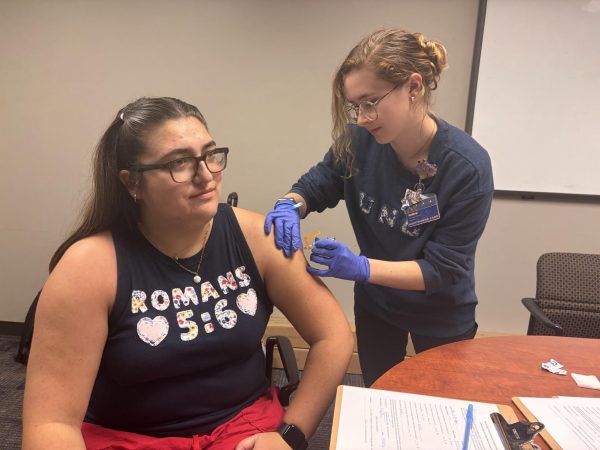Awaken the Monster in You: The Dangers of Energy Drinks
For decades, energy drinks have been the top choice for college students, partiers, or people that need a pick-me-up. It is advertised as a beverage that contains caffeine, B vitamins, and taurine. While marketed as having beneficial effects on physical performance, studies have supported possible detrimental health consequences instead.
In 1962, a company in Japan called Taisho created an herbal “energizing tonic” called Lipovitan. The tonic is similar to cough syrup, but is widely considered the first modern energy drink. The main ingredient is taurine, a sulfur-containing amino acid with antioxidant properties. Taurine is also a key ingredient in Red Bull.
Following its success in Austria in 1987, Red Bull arrived in the United States a decade later. It became popular with college students, often crediting it as a “savior” to the late-night cram sessions, and paired well with vodka.

“I’m tired after work, and after drinking one can, I have enough energy to continue my day.” – Jennifer Ortiz
As sales from the drink surged in the late 90s, more incidents of caffeine overdose side effects increased, too. These side effects included seizures, liver and kidney failure, and psychotic symptoms.
With energy drinks dominating the early 2000s, these hospitalizations became more frequent. According to a government study published in 2013, “the number of emergency room visits due to adverse affects from energy drinks increased ten-fold,” with patients suffering from caffeine-related symptoms.
Since 2018, there has been an increase of 13-to-15-year-olds consuming caffeine by 43%. Rheumatologist Rula Hajj-Ali warns that energy drinks are mainly marketed to adolescents, and that it can increase heart palpitations and caffeine intoxication at a young age.
In 2017, Davis Cripe, a 17-year-old from South Carolina, died from a caffeine-induced cardiac event. He consumed a McDonald’s latte, a large Mountain Dew, and an energy drink in less than two hours. His family and the coroner said he was an active and healthy kid.
The Food and Drug Administration estimates toxic effects, like seizures, can be observed with rapid consumption of around 1,200 milligrams of caffeine.
A Panera Bread customer is surprised she has not had a heart attack yet. On Dec. 9, 2022, content creator Sarah Baus posted a TikTok filmed in her car that went viral. In the video, she rants about one of the newest menu items in Panera Bread, the Mango-Yuzu Citrus Lemonade. Panera advertises a lemonade that gets customers charged up, “it has plant-based caffeine from guarana and coffee extract to keep you going all day; a force of nature.” What customers might not realize is that this lemonade has 260 milligrams of caffeine.

She questions Panera about how they can advertise a drink that taste so good but is so bad for their customers. Compared to Red Bull or Monster, Panera does not warn people about its intake, but persuades them to enter their “Unlimited Sip Club” to get free refills every two hours.
Baus explains that she works inside a Panera to take advantage of its free wi-fi rather than to pay for a co-working space. During this, she drinks about four to five of the charged lemonade. She says that she knew that the drink had caffeine in it, but by the tone of her voice, it becomes apparent she was unaware of how much.
“Sitting there, I’ll drink four or five of these, and I was always like, ‘Man when I work at Panera, I feel great! I feel awesome! I get so much done!’” Sarah Baus
Baus has consumed 1,040-1,300 milligrams of caffeine in one day. The FDA states that for healthy adults, the max amount one should take of caffeine before seeing side effects is 400 milligrams.

Panera Bread is not the only business hit hard with the caffeine claims.
On Feb. 3, Celsius, one of the most popular energy drinks focused on fitness, was hit with a lawsuit. They alleged that the drink labels contained “no preservatives”, but contained citric acid. The company denied the allegations, saying citric acid was added to products as a flavor, not as a preservative.
The FDA states that the claims made by Celsius to improve metabolism are also false and warns people to drink it responsibly. As more awareness of caffeine-induced risks are brought up, people are looking to find healthier ways to get caffeine.
Apps like Fiton are paving the way for caffeine alternatives that can brighten up a morning. They promote small steps like taking a cold shower, drinking chai tea, or dancing to a favorite song can be a substitute. They claim, “ditching caffeine may be easier than you think.”
Your donation will support the student journalists of University of North Georgia. Your contribution will allow us to purchase equipment and cover our annual website hosting costs.

Heyyy, I'm Adriana Hernandez! I'm currently a sophomore at UNG, majoring in communications. And the thing that really caught my attention with journalism...































